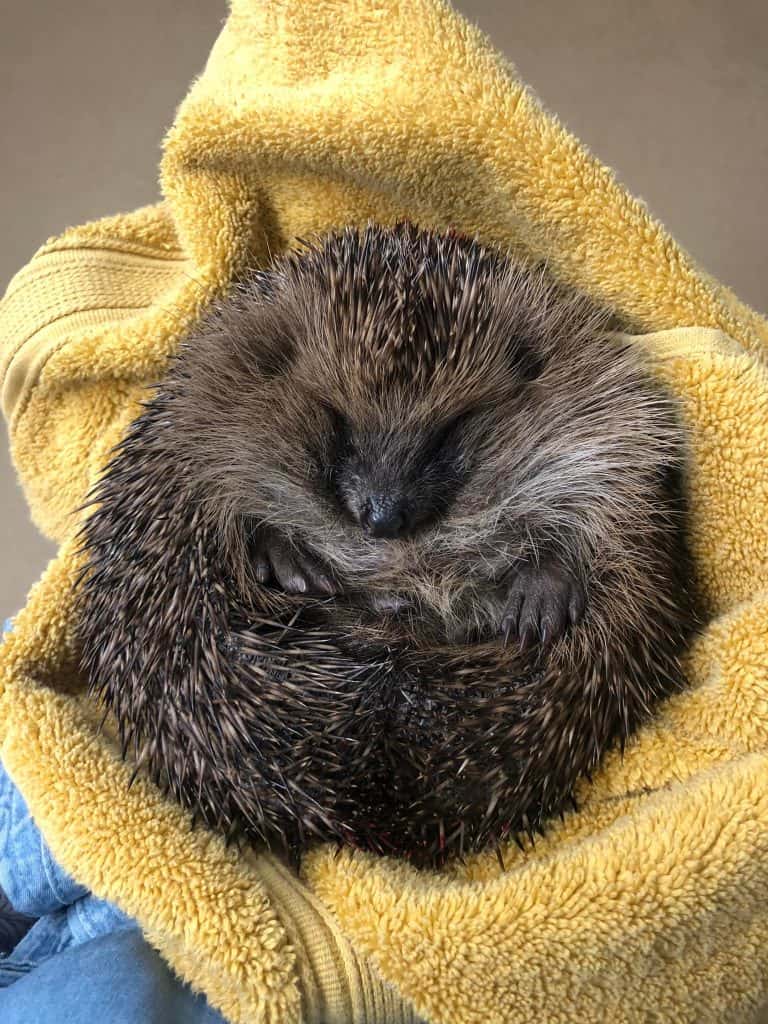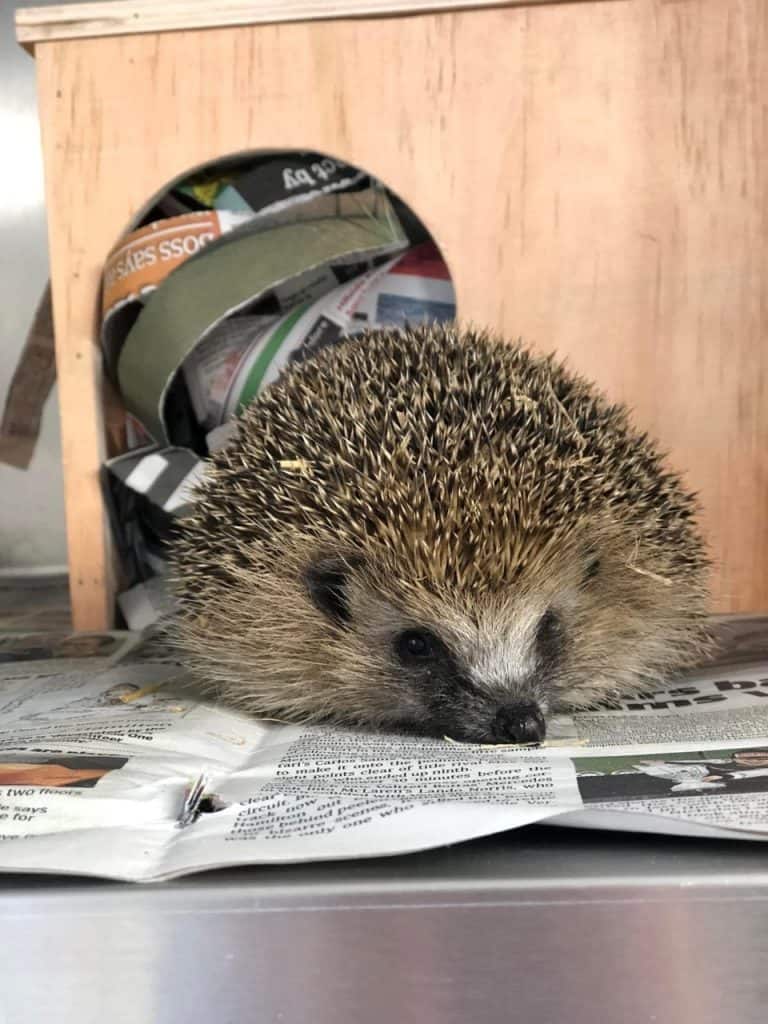We celebrate National Hedgehog day on 2nd February. So, I thought this week’s blog was a great opportunity to shed a little light on how we can help these endangered creatures.
In Britain hedgehogs are found almost everywhere except some Scottish islands. They also tend to be absent from wet areas and pine forests. Uplands and mountainsides are also not a popular habitat probably because they lack suitable food sources and nesting places, but sadly their numbers are in decline.
Intensive farming has led to the fragmentation of habitats resulting in fewer places to nest, hibernate and forage for food. Our roads and motorways have carved up their habitats which in turn creates hazards and it’s a sight I’ve see too often of dead hedgehogs on the sides of roads. The use of pesticides, fungicides and herbicides may be behind the decline in their food.
Fences and walls both prevent hedgehogs from travelling between gardens. Its’ been recorded that they roam up to a mile each night in search of food. Paving over gardens reduces food and shelter and forces hedgehogs onto roads to get to the next patch of green space. Other hazards which they might be faced with are ponds, netting and strimmers. But it’s not all doom and gloom as there are plenty of ways in which we can help these spiky, adorable creatures.

Hedgehog Highway
Allows them access to your garden, simply cut a hole, 12cm x 12cm, in the bottom of your fence. If you have a larger garden you might consider making holes at several points. Discuss with your neighbours and ask if they are willing to do the same, and before you know it you’ve created a hedgehog highway. This now enables them to roam greater distances.
Plants in the Garden
Planting native plants that are food for caterpillars might sound like a weird way to help little hoggies. However, most moth caterpillars pupate in the ground before becoming an adult. This makes them a nourishing food source for any passing hedgehogs. Plants such as honeysuckle, hawthorn, blackthorn and dog rose are all good options.
Hedges
Planting new hedges will allow for easy access between gardens and allow for leaves to accumulate meaning they can forage, hibernate and raise their young safely. Native plants such as hawthorn and hazel will attract egg laying moths. This will hopefully increase the amount of caterpillars, which is one of their favoured foods.
Leaving out Food
Meat based dog and cat food (except fish flavoured ones) are best, but avoid leaving out bread or milk as this can dehydrate and kill hedgehogs. Giving them a helping hand with supplementary food is so important. Especially before and after they hibernate.
Slug Pellet…AVOID!!
Hedgehogs are slug predators. Boosting hedgehog numbers will help control the slug population in your garden. Slug pellets contain metaldehyde, which is lethal to hedgehogs. Wildlife friendly/organic pellets contain the less toxic ferric phosphate. However they still take slugs and snails out of the food chain.
Strimming in Garden
Rescue centres are full of hedgehogs with injuries caused by strimmers. ALWAYS check your long grass before using your strimmer, If any hedgehogs are found move them to a safe, secluded spot.
Twigs/Leaves/Logs Piles
A pile of leaves, logs or twigs left in a quiet corner of the garden makes the perfect hedgehog habitat, providing a warm, dry and secluded place for them to nest in and hibernate. This will also encourage small invertebrates to take shelter here, providing the hungry hedgehogs with food.
Hedgehog Houses
You can make them yourself if you are DIY minded or I’ve seen in a lot of Hedgehog Houses being sold in shops. They need a dry, safe place to raise young and hibernate.

Bonfires
Its really important you dismantle it and rebuild it just before lighting or light it on the same day you build it. By doing this it will ensure that no hedgehogs or other wildlife have had a chance to creep into it.
Safe Ponds
Ponds are a brilliant way to attract all sorts of wildlife into your garden. However, they can be a danger for some. Hedgehogs can swim but quickly become exhausted and find it impossible to climb out. Ensure your pond has sloping sides so hedgehogs can exit easily or place a log at one end to act as a ladder.


